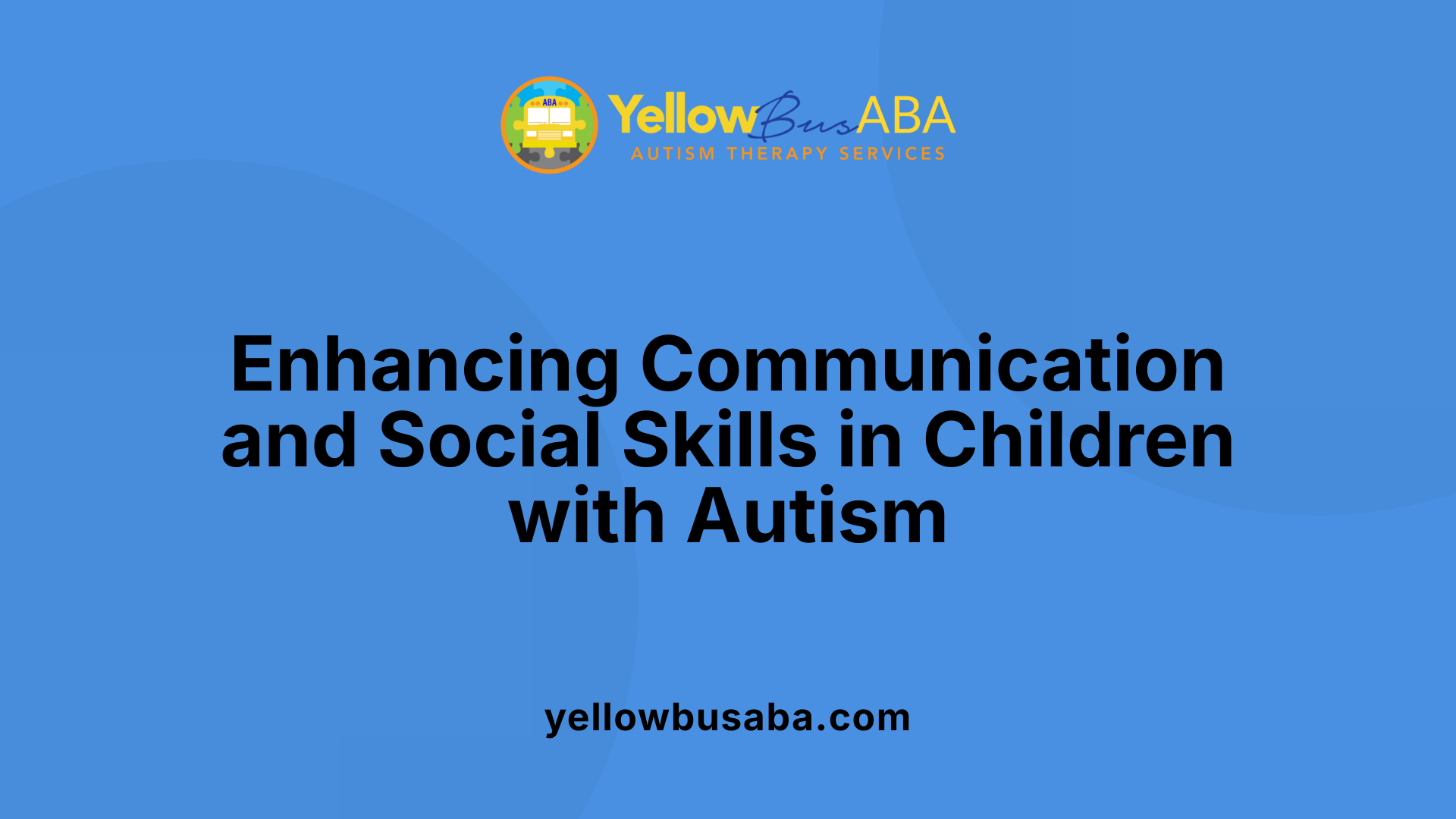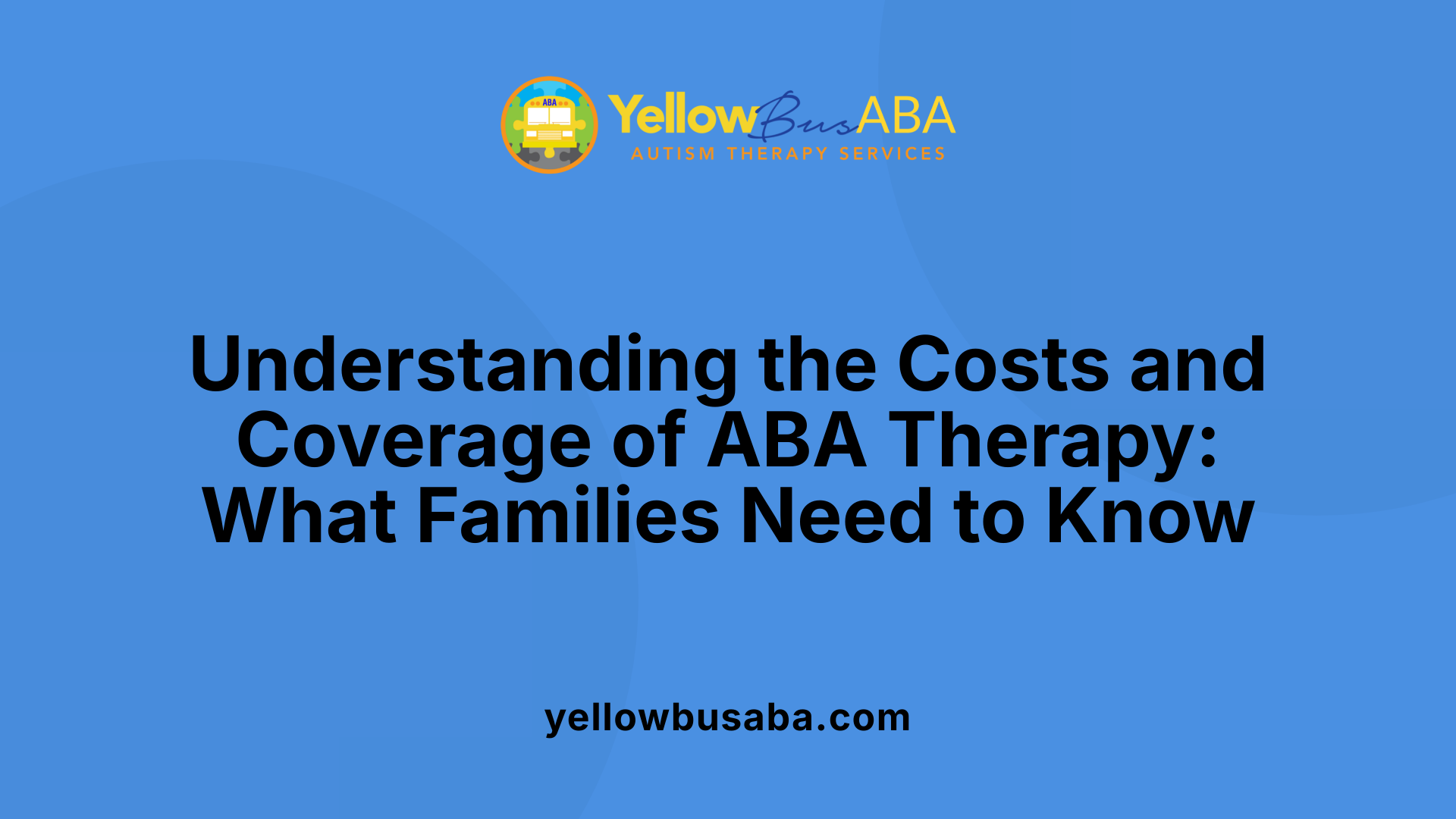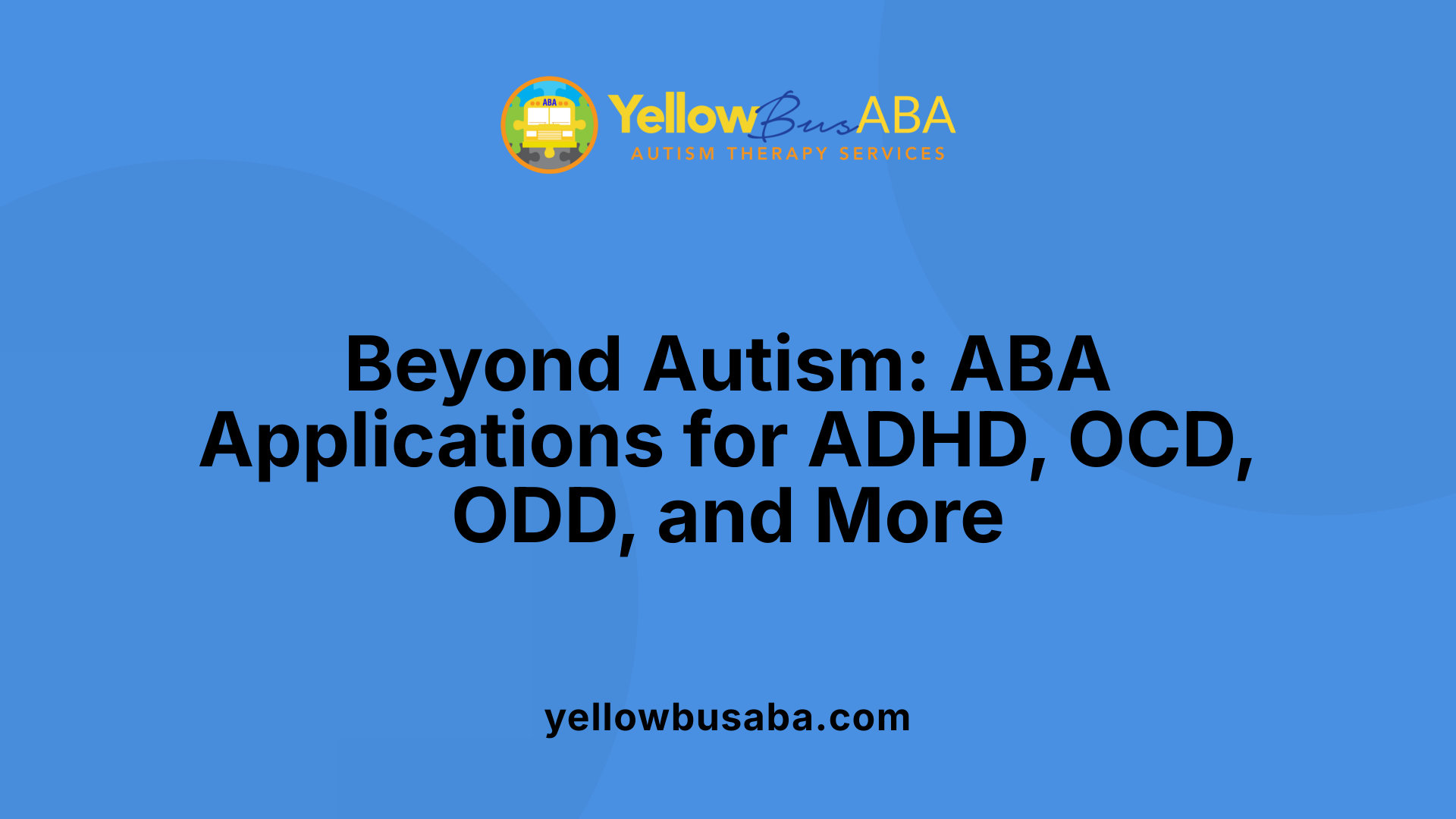The Benefits of ABA Therapy for Children with Limited Emotional Expression
October 23, 2025
Unlocking Emotional Potential: How ABA Therapy Transforms Childhood Development

Understanding Emotional Challenges in Children with Autism
Children on the autism spectrum often face difficulties in expressing and regulating emotions, which can impact their social interactions and overall quality of life. Applied Behavior Analysis (ABA) therapy offers a scientifically-backed approach to helping these children develop emotional recognition, communication skills, and adaptive behaviors. This article explores the multifaceted benefits of ABA therapy, focusing on its role in supporting children with limited emotional expression, and highlights how individualized interventions contribute to lasting developmental gains.
What is Applied Behavior Analysis (ABA) Therapy?
Definition and principles of ABA
Applied Behavior Analysis (ABA) therapy is a science-based approach that focuses on understanding and shaping human behavior. It uses principles of learning and behavior science to increase positive behaviors and reduce challenging ones, particularly in children with autism spectrum disorder (ASD).
Behavior modification through antecedents and consequences
ABA therapy relies on analyzing the ABCs of behavior: Antecedents (what happens before a behavior), Behavior itself, and Consequences (what follows it). By understanding these components, therapists can modify triggers and outcomes to encourage desired behaviors and discourage unwanted ones.
Role of positive reinforcement
A cornerstone of ABA is positive reinforcement—rewarding a child immediately after a desired behavior to increase the likelihood of it recurring. This strategy helps teach skills like communication, social interaction, and daily routines effectively.
Individualized treatment plans
Every ABA program is tailored to the child's unique strengths and challenges. After a comprehensive assessment, a Board Certified Behavior Analyst (BCBA) develops personalized goals and a treatment plan focused on improving communication, social skills, and independence.
Professional qualifications of providers
ABA therapy is delivered by highly trained professionals including BCBAs and Registered Behavior Technicians (RBTs). These experts ensure evidence-based practices are followed and progress is closely monitored.
Settings where ABA is delivered
ABA can be provided across multiple environments such as the child's home, school, or community. This flexibility maximizes opportunities for learning and generalizing new skills.
Evidence base and research support
ABA is recognized as the gold standard in evidence-based treatment for ASD by organizations like the US Surgeon General. Research consistently shows improvements in communication, social interaction, daily living skills, and reductions in behavioral challenges when therapy is implemented early and intensively.
Data-driven progress monitoring
Ongoing data collection is integral to ABA, allowing therapists to track progress, adjust goals, and refine strategies to meet the child's evolving needs effectively.
These elements come together to make ABA a scientifically supported, individually tailored therapy that promotes meaningful growth in children with autism.
How ABA Therapy Supports Emotional and Social Development in Children with Autism

Enhancement of Communication Skills
ABA therapy significantly boosts communication abilities in children with autism by fostering language development and expressive speech. Techniques like Discrete Trial Training and the Picture Exchange Communication System (PECS) are used to teach these skills, making it easier for children to express needs, needs, and emotions.
Improvement in Social Interaction
Social skills such as eye contact, turn-taking, and understanding social cues are integral to ABA therapy. Children learn to build friendships and engage more effectively with peers, which are crucial for social inclusion and emotional well-being.
Teaching Emotional Recognition and Regulation
Structured ABA sessions teach children to identify and manage their emotions. Through positive reinforcement, they learn calming strategies and appropriate emotional responses, reducing frustration and anxiety.
Reduction of Challenging Behaviors
ABA helps reduce behaviors like tantrums, aggression, and self-injury by identifying triggers and teaching alternative functional behaviors. This leads to a safer and more supportive environment for children.
Development of Friendships and Eye Contact
ABA promotes foundational social skills, including maintaining eye contact and participating in social exchanges, which aid children in forming and sustaining friendships.
Parental Involvement and Training
Programs often involve training parents to reinforce ABA techniques at home, enhancing the consistency and generalization of skills. Parental involvement has been shown to improve emotional and social outcomes.
Long-Term Emotional Benefits
Research indicates that ABA therapy's benefits in emotional regulation and social skills often persist into later life, contributing to improved intellectual functioning and adaptive behavior.
How does ABA therapy support individuals with autism?
ABA therapy supports individuals with autism by applying evidence-based methods that increase positive behaviors and reduce unproductive ones. Tailored to each child's unique needs, ABA programs improve communication, social interaction, daily living, and academic skills using strategies like positive reinforcement and structured teaching. This individualization ensures effective learning and independence development, leading to enhanced social and emotional outcomes.
Common Techniques and Strategies Used in ABA Therapy

What techniques are commonly used in ABA therapy?
ABA therapy employs a variety of behavior-based techniques designed to teach new skills and reduce challenging behaviors. A foundational strategy is positive reinforcement, which strengthens desired behaviors by rewarding them, often through token economies—systems where tokens are earned to exchange for preferred items or activities.
Discrete Trial Training (DTT) is a highly structured approach that breaks skills into small, manageable steps to be taught one at a time. In contrast, Natural Environment Teaching (NET) focuses on learning within everyday settings, encouraging children to acquire functional skills during natural interactions.
Other important strategies include modeling, where the therapist demonstrates a behavior for the child to imitate, and prompt fading, which gradually reduces assistance to build independence.
ABA also uses task analysis and chaining to teach complex activities by breaking them down into sequential steps, rewarding completion of each part to build the full skill.
Visual supports and augmentative communication systems help support understanding and communication, particularly for children with verbal challenges.
Finally, the ABC model—Antecedent, Behavior, Consequence—is essential for understanding and modifying behaviors by analyzing what triggers a behavior, the behavior itself, and its consequences.
Together, these techniques are tailored by a behavior analyst to each child's unique needs, with progress tracked through detailed data collection to ensure effective therapy outcomes.
Role of Highly Trained Professionals in Delivering ABA Therapy

Who provides ABA therapy services?
ABA therapy is delivered by a team of trained professionals including Board Certified Behavior Analysts (BCBAs), Registered Behavior Technicians (RBTs), and paraprofessionals. BCBAs hold advanced degrees and are certified by the Behavior Analyst Certification Board. They design, oversee, and assess individualized treatment programs tailored to each child's needs.
RBTs and paraprofessionals work directly with children, implementing therapy plans under the supervision of BCBAs. They provide hands-on support in diverse settings such as clinics, homes, schools, and community environments.
What are the training and certification requirements?
- BCBAs: Must complete graduate-level education in behavior analysis, supervised practical experience, and pass a certification exam.
- RBTs: Complete specialized training, including coursework and competency assessments, to support treatment delivery.
- Paraprofessionals: While certification may vary, they often receive targeted training to assist in therapy implementation.
How do professionals collaborate with families?
An essential element of ABA therapy involves ongoing collaboration with families and caregivers. Professionals train caregivers to reinforce skills learned during sessions. This partnership helps generalize behaviors to everyday environments, enhancing overall treatment effectiveness.
Why is ongoing supervision and assessment important?
Continuous supervision by BCBAs ensures therapy remains aligned with individual progress and evolving needs. They collect data, review outcomes, and adjust intervention strategies accordingly, maintaining high standards and promoting positive results.
Together, this team approach fosters a supportive and structured framework critical for maximizing the gains children with autism achieve through ABA therapy.
How ABA Therapy Enhances Communication in Children with Limited Emotional Expression
Improvement in language and expressive speech
ABA therapy significantly improves communication skills, including language development and expressive speech in children with autism who show limited emotional expression. By focusing on individualized goals, children are guided to build vocabulary, form sentences, and use language meaningfully.
Use of augmentative and alternative communication (AAC)
For children who struggle with verbal communication, ABA integrates augmentative and alternative communication (AAC) methods, such as Picture Exchange Communication System (PECS). This supports children in expressing needs, emotions, and ideas, bridging gaps in verbal ability.
Building social communication skills
ABA emphasizes teaching functional social skills like eye contact, conversational turn-taking, and interpreting social cues. These improvements help children understand and participate in social interactions, thus fostering emotional expression.
Teaching turn-taking and eye contact
Specific techniques such as modeling and discrete trial training are used to encourage turn-taking during conversations and maintaining eye contact, both essential for effective social communication and emotional connection.
Strategies to encourage expressive emotions
ABA therapists use positive reinforcement to promote expressions of emotions. They teach children to label their feelings and encourage appropriate emotional responses, aiding in emotional regulation and better communication.
Role of structured and naturalistic teaching methods
ABA combines structured teaching sessions with natural environment training (NET) to generalize communication skills across settings. This dual approach ensures that children can apply language and social communication skills in everyday life, enhancing their emotional expression.
This comprehensive and adaptable approach makes ABA therapy a powerful tool for enhancing communication in children with autism, especially those facing challenges with emotional expression.
Promoting Emotional Regulation through ABA Techniques
Teaching Identification and Labeling of Emotions
ABA therapy often starts with helping children recognize and name their emotions. Structured sessions incorporate activities that teach children to identify feelings such as happiness, sadness, anger, or fear. This foundational skill enables children to better understand their emotional states.
Developing Coping and Calming Skills
Once emotions are identified, ABA therapists teach coping strategies. These include calming techniques like deep breathing, counting, or using sensory tools to manage feelings of stress or upset. These skills are practiced consistently to help children regulate emotions effectively.
Reducing Emotional Outbursts and Anxiety
ABA targets the reduction of disruptive behaviors, such as tantrums and anxiety-driven outbursts, by identifying triggers and teaching functional communication alternatives. The therapy also addresses separation anxiety, particularly in institutionalized children, showing promising results in emotional stability.
Use of Positive Reinforcement for Emotional Control
Positive reinforcement is central in ABA, rewarding children when they demonstrate appropriate emotional responses. This method motivates children to use their new skills consistently and helps in shaping long-term behavioral changes.
Impact on Separation Anxiety and Emotional Responses
Research confirms that ABA interventions improve emotional regulation skills, significantly reducing separation anxiety and improving how children respond to stressful situations. Parental involvement in training enhances these outcomes further.
Generalization of Emotional Regulation Skills to Daily Life
ABA emphasizes transferring skills learned during therapy to natural settings such as home and school. This ensures children apply emotional regulation in everyday interactions and routines, promoting greater independence and social success.
Reducing Challenging Behaviors with ABA for Better Emotional Expression
Identifying Behavioral Triggers
ABA therapy begins by examining the Antecedent-Behavior-Consequence (ABC) framework to identify what triggers challenging behaviors such as tantrums, aggression, and self-injury in children with autism. This process allows therapists to understand the specific environmental or emotional antecedents that lead to these responses.
Replacing Maladaptive Behaviors with Functional Alternatives
Once triggers are identified, ABA uses positive reinforcement to teach children functional alternative behaviors that serve the same purpose as the maladaptive ones. For example, instead of tantrums to communicate frustration, children are taught to use words or gestures to express their needs.
Strategies for Tantrums, Aggression, and Self-Injury
Tailored ABA strategies focus on reducing these behaviors by teaching coping mechanisms and emotional regulation skills. These include prompting, shaping, and modeling safe and appropriate ways to respond emotionally. Task analysis and chaining help break down complex behaviors into manageable steps.
Use of Antecedent Modification and Consequences
ABA therapy uses antecedent modification to alter the environment before challenging behavior starts, such as adjusting the setting or providing choice to prevent frustration. Consequences, particularly positive reinforcement, encourage continued display of desirable behaviors while discouraging problematic ones.
Behavioral Data Tracking for Continuous Improvement
Data is systematically collected to track frequency, duration, and intensity of behaviors, enabling the Board Certified Behavior Analyst (BCBA) to monitor progress and adjust interventions as needed to maximize effectiveness.
Emotional Impact of Reduced Challenging Behaviors
Reducing challenging behaviors through ABA not only lowers stress for children but also improves their ability to regulate and express emotions healthily. This fostering of emotional regulation contributes to better social interactions and fewer instances of separation anxiety or emotional distress. Overall, behavioral improvements support children’s independence and emotional well-being.
Developing Independence and Daily Living Skills through ABA
Teaching self-care routines and household tasks
Applied Behavior Analysis (ABA) therapy plays a vital role in helping children with autism develop self-care and household skills essential for daily living. Through structured sessions, children learn routines like brushing teeth, dressing, and basic chores, which increase their independence at home and beyond.
Using task analysis and chaining
ABA therapists employ techniques such as task analysis and chaining to break down complex activities into smaller, manageable steps. This approach allows children to master each component of a task sequentially, gradually building towards complete independence in daily routines.
Building adaptive behaviors related to independence
By focusing on adaptive behaviors, ABA helps children develop the practical skills needed for everyday functioning. These include managing time, following schedules, and performing household responsibilities, all of which contribute to enhanced autonomy.
Connecting independence with emotional self-management
Independence is closely linked with emotional regulation. ABA teaches children to recognize their emotions and apply calming strategies during daily tasks, helping reduce anxiety or frustration that might interfere with their ability to complete routines independently.
Fostering confidence through mastery of skills
As children acquire and refine daily living skills through ABA, their confidence grows. This empowerment motivates continued learning and social participation, supporting better overall development and quality of life.
Family and Caregiver Involvement in ABA Therapy
How can families and caregivers participate in ABA therapy?
Families and caregivers play a crucial role in the success of ABA therapy by actively engaging in the intervention process. They can participate by consistently reinforcing the skills taught during ABA sessions throughout daily routines at home and in community settings. This consistency helps children generalize new behaviors and skills beyond therapy sessions.
Techniques for reinforcing skills at home
Caregivers can use several ABA techniques such as positive reinforcement, providing clear prompts, and using visual supports to encourage desired behaviors. Establishing predictable routines and using supportive tools like picture exchange communication systems (PECS) or task analysis can make learning more accessible and motivating for the child. Practicing skills like communication, daily living tasks, and emotional recognition regularly at home solidifies progress made during therapy.
Maintaining consistent strategies across settings
A collaborative approach between therapists and families ensures that intervention strategies remain consistent in various environments. Regular communication between behavior analysts and caregivers is necessary to monitor progress, adjust goals, and troubleshoot challenges, fostering harmony between home and therapy settings.
Education about ABA principles
Caregivers benefit from learning foundational ABA principles, such as the ABC model (Antecedent, Behavior, Consequence) and the importance of positive reinforcement. This understanding empowers families to support their child’s learning effectively and adapt techniques as new challenges arise.
Supporting caregiver well-being and collaboration
Caregiver well-being is essential to sustain long-term progress. Parents and caregivers are encouraged to practice self-care and maintain a positive, cooperative attitude toward therapy providers. A strong therapeutic alliance built on trust and open communication enhances intervention outcomes.
Communication between therapists and families
Effective, ongoing communication allows for shared decision-making and timely feedback. Therapists provide training and resources, while families offer insights about their child’s preferences and behaviors in naturalistic settings. This partnership strengthens the individualized, dynamic nature of ABA programs, ensuring they meet each child’s evolving needs.
Early Intervention and Long-Term Benefits of ABA Therapy

Why is it important to start ABA therapy early?
Early intervention with ABA therapy is critical because it sets the foundation for enhanced social interaction, communication, and emotional regulation in children with autism. Research supports beginning ABA therapy as soon as autism is diagnosed to maximize developmental gains.
How does ABA therapy sustain intellectual functioning over time?
Long-term ABA therapy has been shown to improve intellectual functioning by continuously building cognitive skills. These sustained improvements help children not only learn foundational concepts early on but also maintain and advance these abilities through later childhood and beyond.
What lasting gains are seen in language and social skills?
ABA therapy contributes to lasting growth in expressive speech, language development, and social capabilities. Children develop skills such as eye contact, turn-taking, and emotional understanding, which support friendships and social success throughout different life stages.
What do longitudinal research outcomes reveal about ABA?
Studies affirm that children receiving ABA therapy exhibit continued improvements in communication, daily living, and social behaviors years after treatment begins. The positive effects on reducing challenging behaviors like tantrums and anxiety also persist over time.
How does ABA benefit emotional and adaptive behaviors across life stages?
In addition to social and cognitive benefits, ABA helps children learn emotional regulation strategies, identify emotions, and develop healthy coping mechanisms. As a result, these individuals often show enhanced adaptive behaviors and greater independence well into adolescence and adulthood.
Accessibility and Cost Considerations for ABA Therapy

Typical Costs of ABA Therapy
ABA therapy typically costs around $120 per hour in the United States. However, the exact price can vary widely depending on a child's condition severity, the type of program offered, the qualifications of the service provider, and geographic location.
Variations in Insurance Coverage by Location
Insurance coverage for ABA therapy is not uniform across the country. States like California, Massachusetts, and Indiana have mandates requiring insurance providers to cover ABA services, often including grants to assist families. Conversely, some states have less comprehensive insurance requirements, leaving families to handle significant out-of-pocket expenses.
Resources for Funding and Support
Several advocacy groups and healthcare resources exist to help families understand ABA therapy options and access funding. These organizations provide guidance on navigating insurance policies, locating qualified providers, and identifying additional grants or financial aid programs.
Strategies for Families to Access Quality Care
To access quality ABA therapy, families should seek providers led by accredited professionals such as Board Certified Behavior Analysts (BCBAs) and Registered Behavior Technicians. It's important for caregivers to thoroughly assess potential therapists by asking detailed questions about their credentials, program structure, and progress monitoring methods. Engaging in parental training offered through many ABA programs can also enhance the therapy's effectiveness.
Role of Advocacy Organizations
Advocacy organizations play a crucial role in advancing access to ABA therapy. They promote legislative changes, increase public awareness about the benefits of ABA, and support families in overcoming barriers to care. These groups can also connect families with peer networks and professional resources to ensure sustained therapy engagement.
| Aspect | Description | Impact on Families |
|---|---|---|
| Cost | Average $120/hour, varies by condition and provider qualifications | Financial planning necessary for sustained therapy access |
| Insurance Coverage | Mandated in some states like CA, MA, IN; less coverage elsewhere | Families may require advocacy and financial aid in uncovered states |
| Funding and Support | Grants and resources provided by advocacy organizations and healthcare entities | Helps reduce financial burden and improve therapy accessibility |
| Quality Care Strategies | Engaging BCBAs, asking informed questions, parental involvement | Ensures tailored, effective therapy with measurable progress |
| Advocacy Role | Promotes legislation and support networks | Enhances overall access and awareness for ABA services |
Expanding ABA Beyond Autism: Applications for Other Conditions Affecting Emotional Expression

Use of ABA in ADHD, OCD, ODD, PTSD, and Brain Injury
ABA therapy extends well beyond its common association with Autism Spectrum Disorder (ASD) and provides valuable treatment for other developmental and mental health conditions. For children with Attention Deficit Hyperactivity Disorder (ADHD), ABA techniques like token economies and behavioral reinforcement promote positive behaviors, improve social interaction, and enhance impulse control. Those with Obsessive-Compulsive Disorder (OCD) benefit from behavior therapy within ABA that reduces compulsions and fosters healthier reactions to triggers. In Oppositional Defiant Disorder (ODD), ABA conditions adaptive behaviors through rewards and positive reinforcement instead of punishment.
ABA also helps individuals with Post-Traumatic Stress Disorder (PTSD) by managing reactive behaviors tied to traumatic memories, although it serves best as part of a broader treatment approach. Children affected by panic disorder receive support through behavioral activation strategies encouraging engagement in pleasurable activities to control panic attacks. Additionally, children recovering from traumatic brain injury can use ABA to modify problematic behaviors, regain social skills, and relearn essential daily tasks, thereby improving their overall quality of life.
How ABA Addresses Behavioral and Emotional Challenges in Various Disorders
ABA therapies fundamentally work by increasing desired behaviors and decreasing harmful ones through scientifically supported learning principles. The core strategy of positive reinforcement rewards desirable actions, promoting skill acquisition and emotional regulation. The ABC (Antecedent, Behavior, Consequence) framework provides a structured way to understand and alter maladaptive behaviors by identifying triggers and consequences. For emotional expression, ABA teaches identification of emotions and coping mechanisms across diagnoses, which supports emotional regulation in children facing diverse challenges.
Adaptability of ABA for Diverse Treatment Goals
One of ABA's greatest strengths lies in its adaptability to individual needs. Qualified behavior analysts tailor programs after detailed assessments, creating personalized goals that address each child’s unique behavioral and emotional challenges. These programs are flexible enough to be delivered in various settings, including home, school, and community environments, making them accessible and pragmatic for different lifestyles and treatment objectives.
Benefits of Behavioral Techniques for Emotional Regulation Across Conditions
Behavioral strategies used in ABA, such as shaping, modeling, and prompt fading, facilitate emotional awareness and self-regulation skills across several conditions. For example, children learn calming techniques and develop healthier responses to external stimuli and internal emotional states. This supports reduced anxiety, better social engagement, and improved daily functioning. Such benefits demonstrate the broad impact ABA has on emotional expression and regulation beyond autism, underscoring its utility as a versatile behavioral intervention.
Transforming Lives Through ABA Therapy
Applied Behavior Analysis therapy is a comprehensive, evidence-based approach that empowers children with limited emotional expression to develop crucial skills for communication, social interaction, and emotional regulation. With the support of highly trained professionals and active family involvement, ABA creates individualized pathways to growth, enabling children to reduce challenging behaviors and gain independence. Early intervention and consistent therapy contribute to meaningful long-term benefits, enhancing quality of life well beyond childhood. As awareness and accessibility continue to improve, ABA remains a vital tool in unlocking the emotional potential of children with autism and other developmental challenges.
References
- The effectiveness of applied behavior analysis program ...
- Top 7 Benefits Of ABA Therapy For Autistic Children
- Applied Behavioral Analysis: Overview, Techniques & Cost
- Is ABA Therapy Only for Autism?
- Applied Behavior Analysis (ABA)
- Applied Behavior Analysis (ABA)
- Applied Behavior Analysis (ABA)
- Applied Behavior Analysis in Children and Youth with ...






